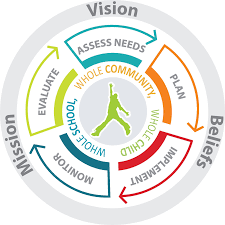MICIP
Michigan's Integrated Continuous Improvement Process
The Michigan Integrated Continuous Improvement Process (MICIP) is a systematic approach to enhance educational outcomes by identifying areas for improvement, implementing changes, and assessing the impact of those changes. The cyclical process focuses on the needs of the whole child to improve education. By engaging in a Continuous Improvement Process, schools strive to create a culture of continuous learning and enhancement, ultimately leading to improved educational outcomes for students.
MARESA MICIP Support Sessions
Receive targeted support throughout the MICIP process. Options include attending a MARESA MICIP Support Session or scheduling in-district support.
The MICIP Process
 The MICIP Process:
The MICIP Process:
- Analyzing data helps identify the specific areas where improvement is needed, such as student achievement, graduation rates, or teacher professional development.
- Based on the analysis, educational stakeholders (teachers, administrators, and sometimes parents or community members) set specific, measurable, achievable, relevant, and time-bound (SMART) goals to address the identified areas for improvement.
- A plan is created to outline the strategies and actions that will be taken to achieve the set goals.
- Decisions are made regarding the allocation of resources, including personnel, time, and financial resources, to support the implementation of the action plan.
- The strategies and action plans are implemented in classrooms, schools, or districts.
- Continuous monitoring of progress occurs to ensure that the implemented changes align with the intended goals.
- The effectiveness of the implemented strategies is analyzed, and adjustments are made based on the results.
- Educational stakeholders reflect on the outcomes and lessons learned from the implementation. Based on the reflection, adjustments are made to the action plan for continuous improvement.
- Results and progress are communicated with various stakeholders, including teachers, students, parents, and the community.
- The process is cyclical, with continuous cycles of data collection, analysis, goal setting, action planning, implementation, assessment, reflection, and adjustment.
